I may take my kids to the doctor frequently, but I’ve been neglecting my own health for years now. And I suspect that this the case for many other moms, too.
It’s just so easy to put our own health at the bottom of our mile-long to-do list. But we have to realize that we won’t have many years to enjoy with our kids and grandkids if we succumb to heart disease or stroke.
Too often, this comes as a result of unchecked, high cholesterol.
In an attempt to get a handle on my own health, I recently went to the doctor for a physical and a cholesterol test. Despite a BMI of only 20, my results were shocking: My total cholesterol was 230!
Since then, I’ve done some research about how to lower it. I found that, most of the time, doctors advise patients that the best way to lower cholesterol is with a drug called a statin. This may make some people believe that as long as they pop a pill each day, they can tuck into a giant plate of fettuccine Alfredo without any repercussions, but this is a false assumption!
For some wondering how to lower cholesterol, there are certain dietary guidelines that can be followed to gather results without needing medication. But check with your doctor first to see if you should try eating foods that lower cholesterol, then follow our guide on how to actually incorporate these foods into your daily diet.
Thumbnail Source: Pixabay.
What Is Cholesterol?
So, what is cholesterol? Put it simply, cholesterol is a waxy fat found in the bloodstream. Cholesterol is formed by the liver and is used by the body to build cells and keep organs functioning properly. While cholesterol is actually a good thing, the trouble starts when we consume foods high in dietary cholesterol, like butter, red meat, and baked goods. Since the liver makes all the cholesterol your body needs, the excess amount from the food you eat causes your cholesterol level to become elevated, which leads to the build-up of plaque in your arteries. This build-up is responsible for heart disease, stroke, dementia, and coronary artery disease.
According to the Centers for Disease Control, one in six American adults has high cholesterol. As a result, you're encouraged to get yours checked today! When you go in for a cholesterol test, your results will be reported as five numbers:
- total cholesterol
- LDL or low-density lipoprotein (this is the bad kind)
- HDL or high-density lipoprotein (this is the good kind)
- triglycerides
- and a ratio of HDL to total cholesterol.
In order to better understand how the results are broken down, let’s take a look at my results:
Total Cholesterol: I rightfully freaked out when I saw that my total cholesterol was 230, since most doctors consider normal cholesterol levels to be under 200. But total cholesterol doesn’t tell the whole story of your heart health. Let’s look at the next number.
HDL: Dubbed the “good cholesterol,” HDL actually removes excess cholesterol from the blood stream. A high HDL number actually reduces the risk of heart disease, and many foods that help lower cholesterol also increase HDL. The recommended range of HDL is between 40–60mg/dL, and mine was 75. So I’m in great shape here. Let’s see how much of the bad stuff is coursing through my veins.
LDL: Since this is the type of cholesterol that clogs up your arteries, you want this number to stay as low as possible. The AHA says normal cholesterol levels for LDL are lower than 100 mg/dL, and mine was 137, probably thanks to my cookie obsession. Looks like I have some work to do here.
Triglycerides: Triglycerides are fat found in your blood that typically come from foods. An unhealthy diet, sedentary lifestyle and excessive consumption of alcohol all contribute to high triglyceride levels. Here’s a disgusting sidenote: if your trigs get too high, your blood will look pink when it flows into the tube because of all the fat. Gross!
Ratio: According to Dr. Ornish, who’s regarded as one of the leading sources for heart health, your cholesterol ratio (total to HDL) is a “better predictor of heart disease” than any of the other numbers. A ratio of 3.0 or lower is considered good, and I was so close, clocking in at 3.1.
Foods To Eat To Lower Cholesterol
Nature actually provides its own medication for your cholesterol. All you have to do is make use of it! If you’re wondering how to lower cholesterol without medication, we’ve listed several foods that are a great place to start, along with some ways to incorporate them into your day without making drastic changes. With your doctor's approval, consider learning how to lower cholesterol naturally.
1. Oatmeal
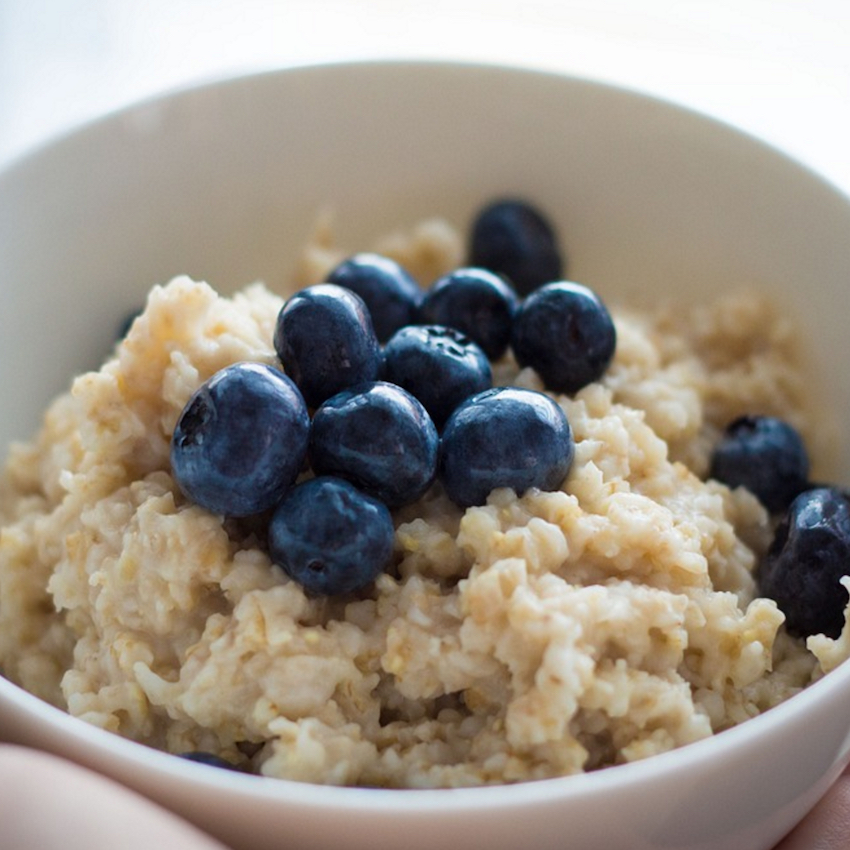
Oatmeal is one of the best foods for lowering cholesterol. It’s high in fiber, which lowers the bad kind.
You can add just about anything to it to suit your taste; it pairs well with healthier sweeteners like honey and maple syrup, and it’s fantastic topped with nuts and flax seed for an unbeatable cholesterol-busting concoction.
Plus, oatmeal will keep you feeling fuller longer, which helps you say no to that platter of pastries at work. Think outside the bowl with these other ways to add oatmeal to your diet:
- Pulse in a blender and add it to soups and stews.
- Mix it with pancake batter to add bulk to pancakes.
- Make healthy oatmeal cookies — skip the butter!
- Mix it with ground turkey in a meatloaf.
2. Kale
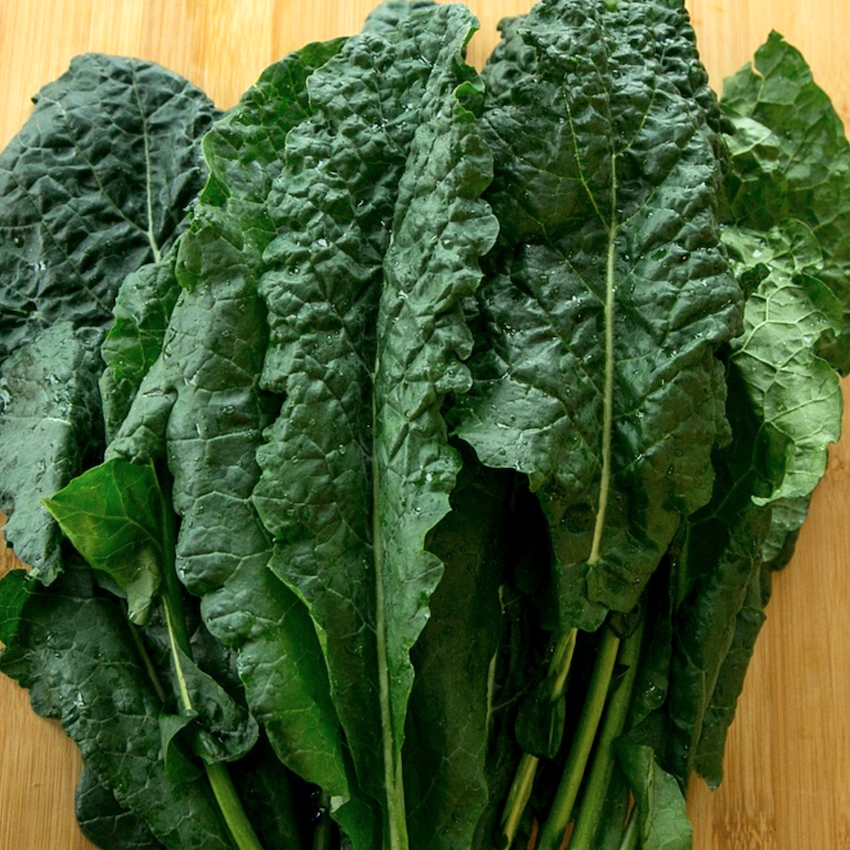
How do you lower cholesterol fast? Kale is the answer!
How could it not help with cholesterol? It’s basically the healthiest food on the planet. Kale contains compounds that remove excess cholesterol from your body, and numerous studies have shown that kale can have a real impact when it comes to how to lower cholesterol levels.
Here are some great ways to incorporate kale into your diet every day:
- Add it to salads.
- Add it to just about any smoothie.
- Use it on sandwiches instead of romaine or iceberg lettuce.
- Juice it along with a lemon and drink it (or check out this cholesterol-lowering tonic).
- Steam it and serve with quinoa and a chicken breast for dinner or with an egg for breakfast.
- Try one of the many kale soup recipes. (Pinterest is a great source!)
3. Beans
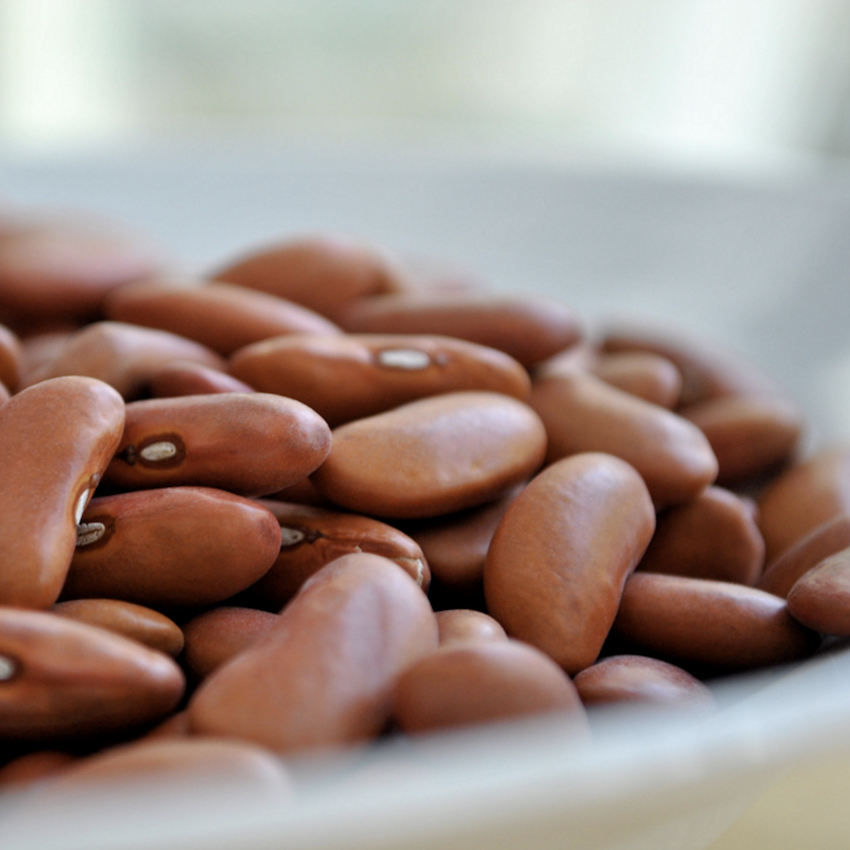
I’ll spare you the jokes. Beans really are good for your heart.
In his groundbreaking book, How Not to Die, Michael Greger, M.D. speaks about the 2007 study conducted by the American Institute for Cancer Research, saying, “One of their summary cancer-prevention recommendations is to eat whole grains and/or legumes (beans, split peas, chickpeas, or lentils) with every meal. Not every week or every day. Every meal!”
They're also powerhouses when it comes to lowering cholesterol, too. So how does one pack in that many beans?
- Mash cannellini beans into oatmeal (from How Not to Die).
- Make chili with an assortment of beans like kidney, cannellini, and great northern beans.
- Try this amazing recipe for spicy grilled chicken with baja black beans and rice — it packs five servings of veggies, one serving of beans, one serving of whole grains and one serving of lean protein all in one meal!
- Dip veggies (or basically anything!) in hummus.
- Make brownies and other baked goods with black beans.
- Mash beans into mixes for everything from cookies to pancakes to waffles.
- Substitute hummus for mayonnaise on sandwiches.
- Snack on lightly salted edamame.
4. Flaxseed
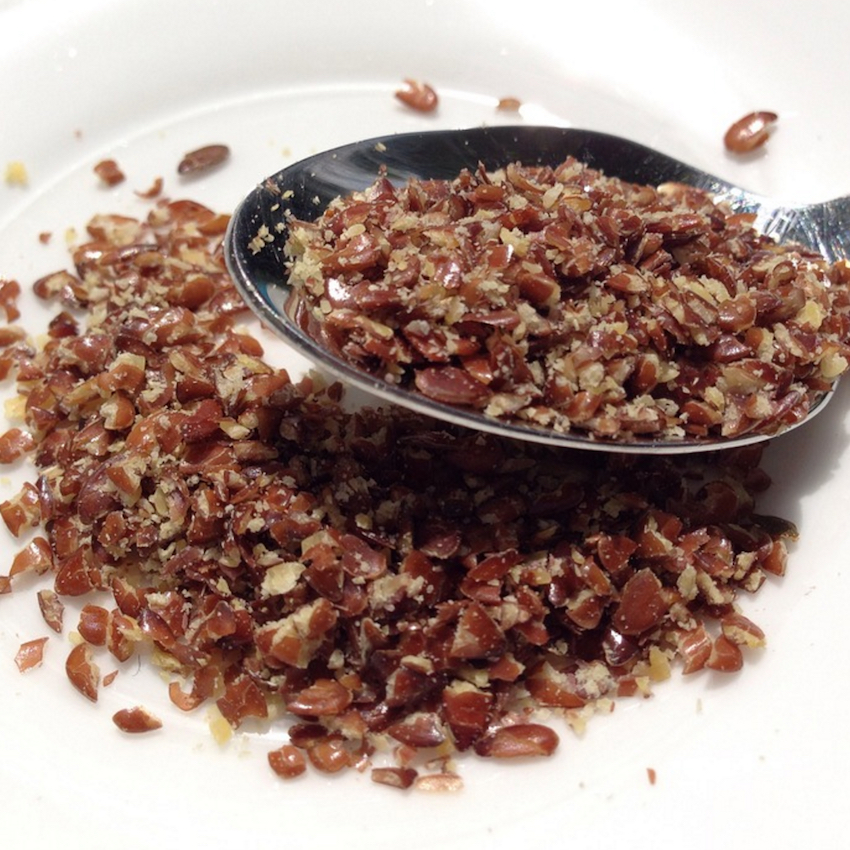
Flaxseed is packed with alpha-linolenic acid, or ALA, which is a type of omega-3 fatty acid. Incorporating flax into your diet on a regular basis is a great way to lower your LDL levels, making it one of the best cholesterol lowering foods. And, the good news is that it’s relatively easy to do so! Here are some sneaky ways to get your daily flax intake:
- Add it to oatmeal, cereal, yogurt, or grits.
- Add it to smoothies of any kind — you can even add it to store-bought smoothies!
- Add it to sauces, marinades, soups, and stews.
- Use it for baking anything from muffins and bread to cookies and cakes.
- Sprinkle it on sandwiches.
5. Green Tea
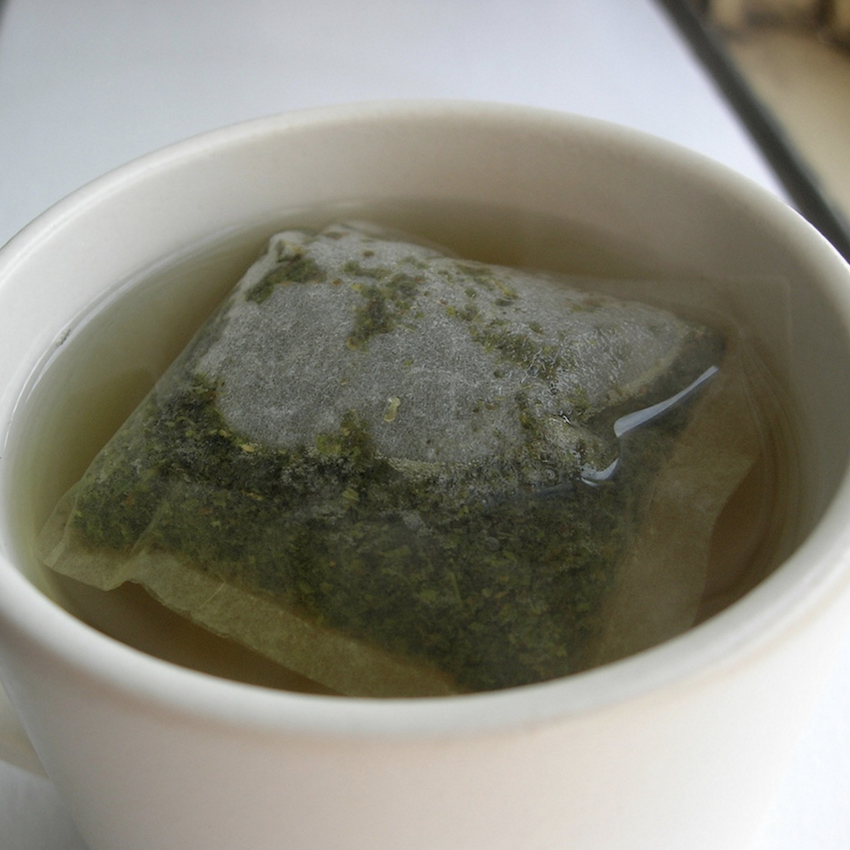
We should all take some lessons from the Japanese, who definitely know the secrets to longevity. Because of their eating habits, they now enjoy the longest life span of any other country. And green tea is high on the list of foods that they consume daily — even multiple times daily. Adding a cup of green tea once or twice daily is a great option for lowering cholesterol. If you really want to amp up your tea habit, try matcha green tea, which contains 10 times the antioxidants of regular green tea, and has been shown to have significant cholesterol-lowering abilities.
High Cholesterol Foods To Avoid
Life is full of sacrifices, and if you want to lower cholesterol naturally, you’ll unfortunately have to make some. In addition to incorporating some of the foods listed above into your diet, we’ve listed several foods with high cholesterol to stay away from, and provided some helpful substitutes to hopefully ease the transition.
1. Saturated Fats And Oils
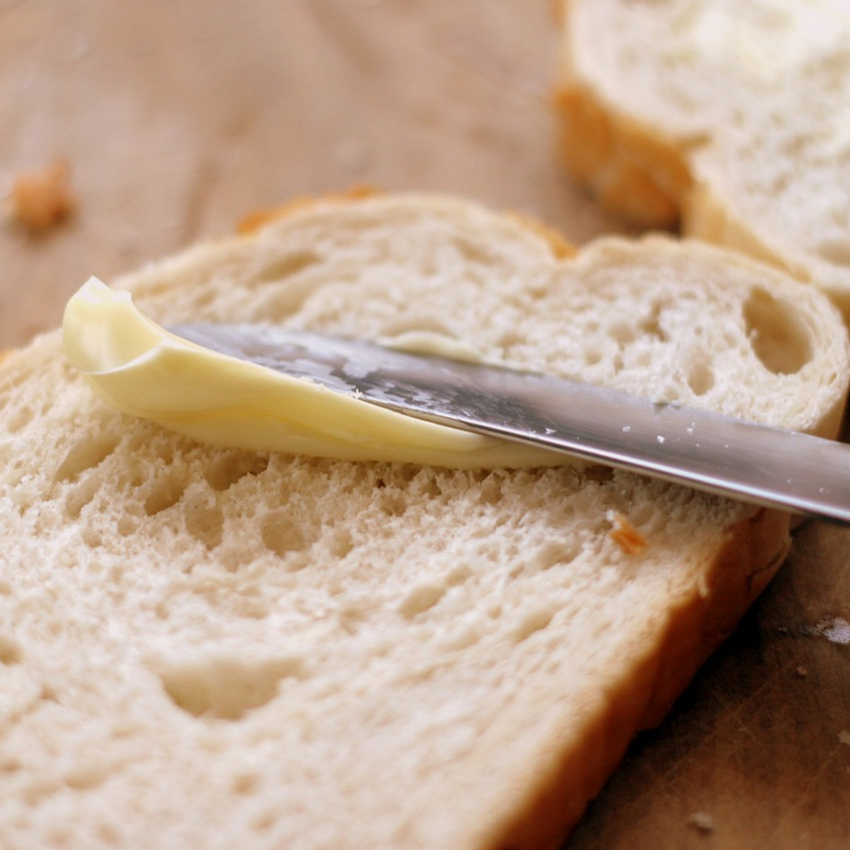
Butter, shortening and high-fat oils like palm and coconut oil can have detrimental effects on your cholesterol. Choose olive oil or avocado oil instead, which both contain high levels of mono-unsaturated fat. Here are some tips you can follow to reduce unhealthy fats and oils in your diet:
- Spread almond butter or hummus on your bagel instead of butter and cream cheese.
- Use olive or avocado oil for cooking instead of vegetable or coconut oil*.
- Substitute a low-sugar applesauce for butter in baked goods.
- Substitute oil and vinegar for salad dressing.
- Dip bread in oil mixed with balsamic vinegar and cracked pepper for a delicious alternative to butter.
*While coconut oil does have many amazing health benefits, it is not recommended for those struggling to keep their cholesterol in check, as it has been shown to increase levels of LDL.
2. Fatty Meats And Red Meat
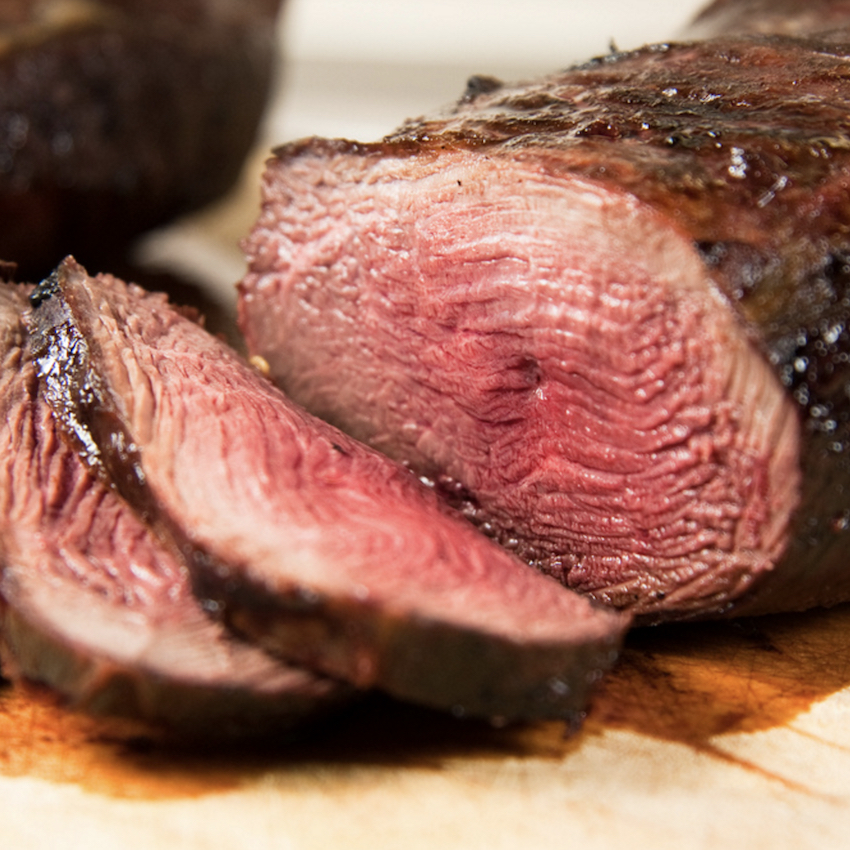
Consuming red meat regularly is one of the worst things you can do for your health, since it contains high levels of dietary cholesterol. The American Heart Association agrees that red meat doesn’t have much place in a cholesterol-lowering diet, and “recommends a dietary pattern that emphasizes poultry and limits red meat.” Here are some easy ways to reduce the amount of red meat in your diet.
- Substitute ground beef with ground chicken or turkey. With proper seasonings and herbs, the taste is virtually the same.
- Keep serving sizes small. The AHA recommends that your meat be about the size of a deck of cards.
- Set a goal to have one meatless meal each week. Keeping it on the same day of the week (e.g., “meatless Monday”) makes it easier to remember and hold yourself accountable.
- Set a goal to eat fish at least twice each week. Pinterest has some amazing fish recipes if you need some inspiration, like this grilled salmon with avocado salsa, one of my personal favorites!
3. Dairy
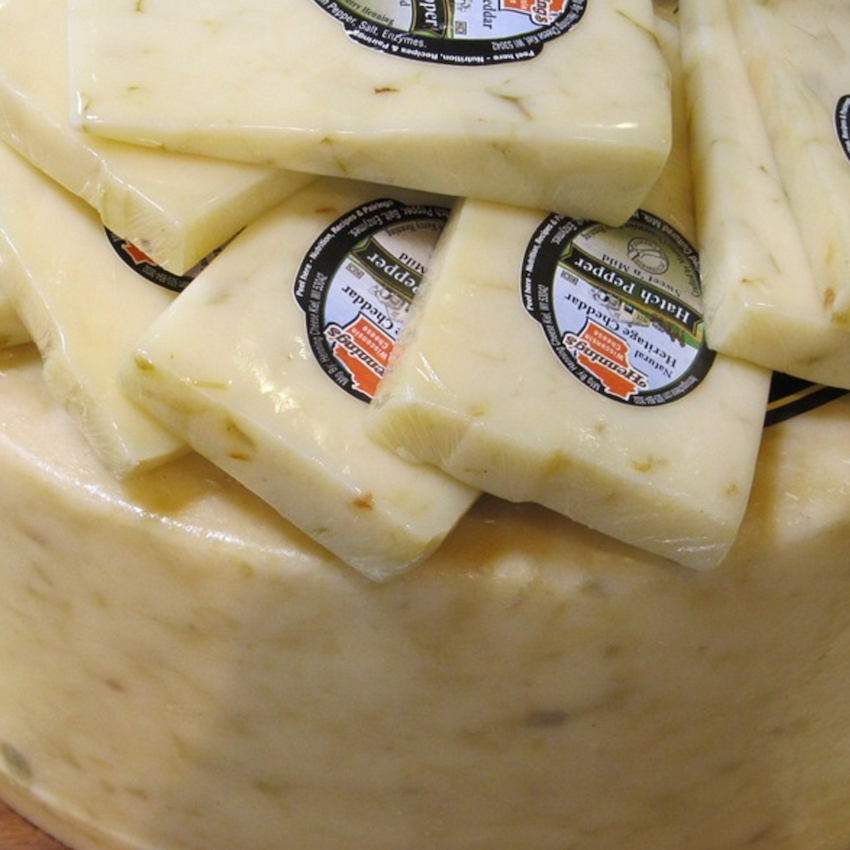
We Americans love our dairy products! A 2011 study by the US Department of Agriculture found that we consume nearly two pounds of dairy products each day.
This isn’t surprising when you think about yogurt, creamer, milk and cheese, many of which are staples of the American diet. This is definitely not a cholesterol-lowering diet!
Full-fat dairy products affect cholesterol in much the same way as meat does, since dairy is also an animal by-product. Here are some ways to make healthier choices when it comes to dairy.
- Substitute milk for almond milk or soy milk, both of which are derived from foods considered to be cholesterol superstars: nuts and beans, respectively.
- Choose healthy alternatives to crackers and cheese, like salsa or guacamole on tortilla chips or hummus on pita chips.
- Use non-dairy creamer in milk, or choose an almond milk or coconut milk-based creamer.
- Substitute heavy cream with coconut milk in recipes.
- Top your morning bagel with almond butter, peanut butter, or hummus instead of cream cheese.
- Substitute guacamole for sour cream on tacos and for cheese on nachos.
4. Baked Goods

This is where I struggle the most! Yummy foods like cookies, cupcakes, pastries, and cakes are not only delicious, they’re closely associated with fun celebrations like birthdays and holidays.
But confections have a dark side, too; they’re loaded with some of the worst ingredients for heart health, like eggs, sugar, butter, and trans fats.
Although it’s super hard to give these up, it’s important to limit how much you eat if you’re wanting to lower your cholesterol. Luckily, a few substitutions can dramatically increase the health factor in your baked goods.
- Substitute tofu, avocado, mashed banana, or applesauce for butter and oil.
- Beets, honey, or maple syrup are great substitutes for white and brown sugar.
- Add flax and/or chia seeds to batter.
- Substitute whole wheat flour for unbleached flour.
- Substitute natural peanut butter or almond butter for regular peanut butter.
- Use frosting and icing sparingly.
Incorporating any of these changes into your diet will definitely help if you’ve ever wondered, “How do I lower my cholesterol?” Trying several — or even all — of these suggestions will definitely help you maintain normal cholesterol levels. And don’t sweat it if you fall off the wagon and cheat on your diet sometimes — just get back up, and try again the next day!
If you plan to make any of these changes, please SHARE this article with anyone looking to lower their cholesterol!




